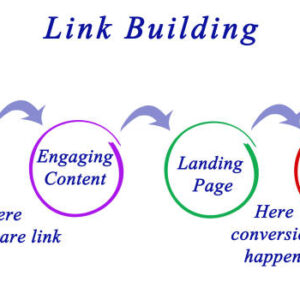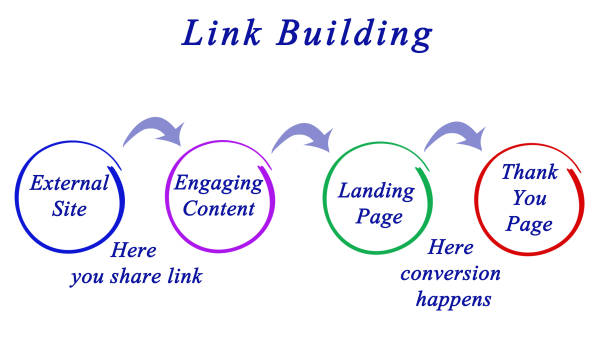
Recent Posts
Ultimate Keyword Research Guide for Successful Digital Marketing
- May 24, 2025
- 3:56 pm
- Admin

In the field of digital marketing, keywords analysis directs your content, search engine optimization, and marketing initiatives. Without it, you would primarily be marketing from the shadows. This powerful instrument enables you to assess how frequently your audience searches, what they demand, and how aggressively competitive those surroundings are. Good keywords help you to write blog posts, launch PPC campaigns, and even slick product pages. Understanding search trends will enable you to draw the appropriate visitors, boost visibility, and improve conversion rates. Longtail keywords, organic traffic, SEO approach, semantic relevance, and search intent will become really important elements of your language and path success.
What is Keyword Research and Why It Matters in Digital Marketing
Keywords analysis lets you see which terms and phrases your audience searches in search engines. You run the risk of losing even great stuff if you misinterpret this. Basically your search engine optimization (SEO), pay-per-click (PPC), and content marketing strategy all rely on keyword research.
- Your approach to content creation is affected by people’s search for buying, education, or comparison.
- Appropriate keywords help to raise page visibility by means of improved search result ratings and visitor generation.
Efficient content decisions result from perfect keyword research for digital marketing. Better content also results in more conversions, traffic, and finally revenue.
Understanding Keyword Types and Their Role in Marketing Campaigns
Let’s explore several keyword kinds and their impact on performance:
Short-Tail against Long-Tail Keywords
Long-tail phrases (like “best email marketing tools for small business”) typically convert better—they are targeted and specific. Though they draw a lot of traffic, short-tail keywords (like “marketing tools”) are very competitive.
branded versus non-branded Keywords
People look for branded keywords (“HubSpot pricing”) since they are familiar with the brand. Non-branded ones (“email automation software pricing”) usually attract new customers.
Navigational, informational, and transactional questions
Looking for a specific site (“Twitter login”), navigational.
Seeking solutions on how to do keyword research is informational.
- Transactional: eager to act (“buy keyword research tool”).
- Every one helps the buyer along their journey at a distinct phase.
LSI and Associated Keywords
Through surrounding words, search engines derive sense. Combining your primary keyword with pertinent concepts (synonyms, context words) therefore helps material read as natural and appropriate.
Step‑by‑Step Keyword Research Process (The Core of the Ultimate Keyword Research Guide)
Step 1. Define Your Objectives and Audience
Be clear about your objectives. With target audiences, you should steer towards either novice or expert. Which content pieces will be informational posts or product pages? Each milestone will turn towards a side depending on your audience’s intended purpose.
Step 2. Have Seed Keywords
Think about your seed keywords, fundamental keywords. Think about the questions your audience can pose. These questions should be your launch points.
Step 3. Keyword Research Tools
Turn your seed keywords into discoverable data for what types and the impact of search that you are having with your audience using Google Keyword Planner, Ahrefs, SEMRush, Ubersuggest, AnswerThePublic so that you can begin to gauge your potential search volumes, competition potentials, related terms and frequently asked questions from actual searchers.
Step 4. Consider Search Volume, Difficulty, and Competition.
More search volume does not equate to greater value. More often than not, keywords that have search traffic that is sustainable at moderate to low difficulty will give you the best return on investment (ROI). There are plenty of good keywords but generally good ones are keywords that limit traffic by criteria that allow a good balance of volume and difficulty while retaining unique potential.
Step 5. Rank By Business Intent And Funnel Stage
Place your keywords in rank order by the ability to.
Top Tools for Keyword Research in Digital Marketing
The top free keyword research tools
Google keyword planner: an official tool with decent volume data.
AnswerThePublic: summarizes the questions users are asking about your topic to visualize user intent.
The best paid keyword research tools
Ahrefs: has detailed rankings, difficulty scores, competition analysis, and keyword explorer.
SEMrush: has keyword gap analysis, CPC estimates, and their keyword magic tool.
Using the Google Search Console and Google Analytics for Keywords
Use the Google Search Console and Google Analytics to analyse what users are already finding via your website. The Queries report in the GSC can surface the keywords that users are finding in search without you having to target them. You can also use the analytics data by landing pages to help surface hidden opportunities.
Chrome Extensions and Plugins to research on the go
Chrome extensions like Keywords Everywhere and MozBar provide limited keyword metric visibility directly in search results which is helpful for doing quick, on-page audits, or just working out content ideas.
How to Apply Keyword Research to Your Digital Marketing Strategy
Utilizing Keywords for All SEO (On-Page, Off-Page, and Technical)
Utilize primary keywords and related keywords in your titles, headers, meta descriptions, and body copy. Off-page methods such as links back to your site will still show some positive results if the link is anchored in keyword phrases. You will also want your technical SEO services to make sure your speed of load time is good, and can be used on a mobile device.
Using Keywords in PPC Campaigns (Google Ads, Bing Ads)
If you are trying to provide ads for people who are targeting those users who are transaction ready, you should pick high intent keywords. From here you will use the appropriate metrics to measure performance like Clickthrough Rate (CTR) and Cost-Per Conversion and modify your bids and ad copy based on your performance.
Using Keyword Research to Build Content Marketing and Blog Strategy
Use keyword clusters to help more appropriately match content topics together. If you’ve identified some informational queries, make great blog posts. If you’ve identified transactional terms, make a landing page and product comparisons. Using keywords as your structure will make sure that your content is closely aligned with users’ search intent.
Using Keywords for Video SEO, and YouTube
Because we will optimize your video titles, descriptions, and tags around the keywords you researched. Something you can use to learn what your audience is interested in is a tool called TubeBuddy and VidIQ.
Advanced Keyword Research Techniques for Competitive Edge
Competitor Keyword Research
Research competitor’s closely positioned ranking spots to top spot keyword “real estate” in this context you just need to pay attention to the keywords they are targeting and successfully ranking from, tools can help you find their keywords and gaps in their content as well, identify those opportunities and create better content.
Gap Analysis: Find missed opportunities
Once you identify which keywords your competitors rank for and you do not, if you can grab those gaps, they usually represent easier wins.
Seasonal & Trending Keyword Research Strategy
Plan Keywords around the seasons. Both Google Trends and Ahrefs allow you to see how keyword search volumes have changed over time. I would create as much prepared content as possible for high spikes in search.
Using AI, and Machine Learning Tools for Predictive keywords Analysis
AI tools can help identify keyword opportunities that are coming soon and if you are the first into the market and you can create an advantage with some additional traffic they may not have even noticed.
Common Keyword Research Mistakes to Avoid
- Relying only on high‑volume keywords: leads to fierce competition and low conversion rates.
- Ignoring user intent and funnel stage: targeting wrong intent wastes effort.
- Keyword stuffing or over‑optimization: search engines penalize unnatural copy.
- Not updating keywords with market changes: keyword popularity shifts fast—stay current.
How to Measure Keyword Research Success
What to Consider Tracking
When you look to review the impact of your keyword analysis you would review organic traffic, rankings, click through rate (CTR) and conversion rate to assess whether the impact of your keyword research is showing up within a reasonable timeframe.
What Tools to Track Performance with
When monitoring changes or lags in keyword rankings overall you would want to use something like Ahrefs, SEMrush, Moz, Google Search Console etc.
Iteration and Ongoing Optimisation
Keyword research is not a ‘set it and forget it’ activity, you should treat it like TV episodes e.g. quarterly reviews or whenever the way we search changes, at which point you can take some time to add updates and refresh its topical level.
Ultimate Keyword Research Checklist for Digital Marketers
- You can also implement this simple checklist for keyword research:
- Understand users & business objectives
- Brainstorm seed keywords
- Use keyword tools & reports
- Examine volume, difficulty, cpc, and intent analysis
- Categorize keywords into semantic/topical clusters
- Map scenarios to clusters
- Map keywords to pieces of content
- Optimize on-page signals (title, headers, etc)
- Understand competitors and trends
- Measure & iterate on your process.
Frequently Asked Questions (FAQs)
What is keyword research in digital marketing?
It’s the process of finding and evaluating the words your audience uses to search. Keyword research helps you match content with what people really want.
What’s the best beginner keyword research tool?
Google Keyword Planner remains the go‑to for starters—no cost and solid data. Combine it with tools like AnswerThePublic to spark idea generation.
How often should I do keyword research?
At least quarterly. Plus whenever you launch new products, enter new markets, or notice shifts in user behavior.
Can keyword research improve PPC performance?
Absolutely—you’ll see higher conversion rates by targeting transactional and high‑intent keywords in your ad campaigns.
How do I find low‑competition keywords?
Look for long‑tail phrases with moderate search volume and low difficulty scores. Tools like Ahrefs and Uber suggest help pinpoint those gems.
Conclusion
The Ultimate Keyword Research Guide for Effective Digital Marketing gives you real-life, actionable strategies.It’s all here, from how to find seed keywords, to cluster them, optimize your content and measure your success. You can begin small, learn quickly with each iteration you’ll have consistent organic growth.
Ready to take a deeper look? Get the checklist, review the advanced tools, and watch the process of thoughtful keyword research change your digital marketing results.

Stay Connected With
Cutting Edge Digital Marketing
Guest Post Innovators, a leading digital marketing agency, delivers comprehensive digital marketing services
Recent Posts





